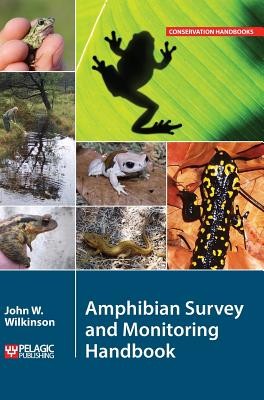
- We will send in 10–14 business days.
- Author: John W Wilkinson
- Publisher: Pelagic Publishing Ltd
- Year: 2015
- Pages: 250
- ISBN-10: 1784270040
- ISBN-13: 9781784270049
- Format: 17 x 24.4 x 1.3 cm, kieti viršeliai
- Language: English
- SAVE -10% with code: EXTRA
Reviews
Description
'John Wilkinson's very readable book covers every aspect of amphibian surveys, from planning through to data analysis and report writing. The comprehensive text includes methods applicable in habitats all over the world and should prove invaluable to a wide international readership.' Trevor Beebee Amphibians are among the most globally endangered groups of vertebrates with more than one-third of species being assessed as declining or threatened. Often, amphibian declines can be attributed to a suite of interacting factors, many of which are human in origin, but further information is needed to elaborate the key causes and to discover ways of reversing declines. Robust surveys provide vital ecological and biological data on amphibian populations, and underpin the decisions made to protect species and reverse their declines. Ongoing monitoring informs land managers and decision makers about whether they are taking the right action. This book is designed to help you carry out amphibian surveying and monitoring so that the results of your surveys can be used effectively. Part 1 introduces amphibians: order Anura (frogs and toads); Caudata (newts and salamanders); and order Gymnophonia (caecilians). Part 2 is essential reading before you start surveying. It introduces the different types of survey and monitoring programmes and discusses survey aims and resources. It contains chapters on collecting and handling survey data; survey permissions and licensing; health and safety, and biosecurity; and handling amphibians. Part 3 discusses everything you need to know during your survey, and provides a detailed look at amphibian survey methods. Part 4 covers presenting and using your survey's data to best effect. A useful resources section is also provided, with example survey forms and details of additional information resources that will optimize the impacts of your surveys. Key amphibian survey techniques are discussed with reference to published examples of successful surveys - so you'll be able to choose what's right for your situation. Tips on optimizing your survey effort and handling amphibians in the field are also included. Whether carrying out a student expedition project or seeking information to support the management of a protected area, this book contains essential advice from an amphibian ecologist who has encountered the same sorts of decisions you'll face when planning your surveys.
EXTRA 10 % discount with code: EXTRA
The promotion ends in 23d.16:35:09
The discount code is valid when purchasing from 10 €. Discounts do not stack.
- Author: John W Wilkinson
- Publisher: Pelagic Publishing Ltd
- Year: 2015
- Pages: 250
- ISBN-10: 1784270040
- ISBN-13: 9781784270049
- Format: 17 x 24.4 x 1.3 cm, kieti viršeliai
- Language: English English
'John Wilkinson's very readable book covers every aspect of amphibian surveys, from planning through to data analysis and report writing. The comprehensive text includes methods applicable in habitats all over the world and should prove invaluable to a wide international readership.' Trevor Beebee Amphibians are among the most globally endangered groups of vertebrates with more than one-third of species being assessed as declining or threatened. Often, amphibian declines can be attributed to a suite of interacting factors, many of which are human in origin, but further information is needed to elaborate the key causes and to discover ways of reversing declines. Robust surveys provide vital ecological and biological data on amphibian populations, and underpin the decisions made to protect species and reverse their declines. Ongoing monitoring informs land managers and decision makers about whether they are taking the right action. This book is designed to help you carry out amphibian surveying and monitoring so that the results of your surveys can be used effectively. Part 1 introduces amphibians: order Anura (frogs and toads); Caudata (newts and salamanders); and order Gymnophonia (caecilians). Part 2 is essential reading before you start surveying. It introduces the different types of survey and monitoring programmes and discusses survey aims and resources. It contains chapters on collecting and handling survey data; survey permissions and licensing; health and safety, and biosecurity; and handling amphibians. Part 3 discusses everything you need to know during your survey, and provides a detailed look at amphibian survey methods. Part 4 covers presenting and using your survey's data to best effect. A useful resources section is also provided, with example survey forms and details of additional information resources that will optimize the impacts of your surveys. Key amphibian survey techniques are discussed with reference to published examples of successful surveys - so you'll be able to choose what's right for your situation. Tips on optimizing your survey effort and handling amphibians in the field are also included. Whether carrying out a student expedition project or seeking information to support the management of a protected area, this book contains essential advice from an amphibian ecologist who has encountered the same sorts of decisions you'll face when planning your surveys.


Reviews